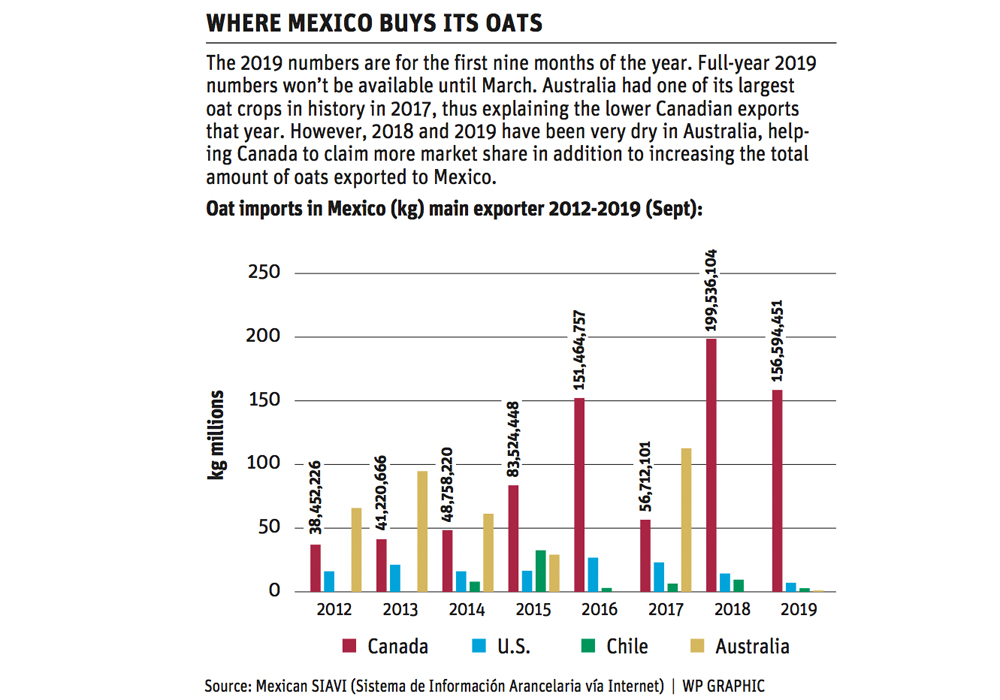Hedging | Analysts say to watch the December contract, but sell before logistics affect price
MINNEAPOLIS, Minn. — Despite the outrageous spread between futures and prairie cash oats prices this winter, Chicago oats futures are not worthless as a hedging tool for farmers, traders and risk managers say.
But they have to be used more carefully than with the big futures contracts and farmers need to get out of positions much earlier than with other crop futures.
“It’s tough to use,” said Brian Voth of Agri-Trend Marketing.
“Things can become so much more extreme.”
Chicago oats futures went wacky this winter, with futures prices shooting sky-high while prairie cash bids were falling.
Read Also

Food label to change after glyphosate lawsuit
General Mills has settled a lawsuit over the phrase “Made with 100% Natural Whole Grain Oats” on its Nature Valley granolabars
The situation got more extreme as winter contracts moved toward expiry. Growers felt the futures were not converging as they should with the prairie cash price.
Futures prices did not reflect what a prairie farmer could get for his crop, so they were not only an ineffective hedge, but outright dangerous.
This was almost entirely due to the logistics crisis gripping the western Canadian rail system. The Prairies were awash with huge volumes of almost every crop, while the railways were hauling far less than commercial users wanted.
Southbound rail traffic appeared to be particularly reduced by the slow logistics, and that hammered the oats trade. Milling oats mostly move to U.S. processors near Minneapolis and Chicago.
The futures contract rose high above cash prices because farmers and elevators with oats couldn’t practically delivery against it. Trucks were hard to find during the winter and oats is a particularly bulky crop, creating large shipping bills for whoever tried to drive it to Minneapolis to cash in on the cash-futures spread.
However, Frontier Futures Minneapolis trader Austin Damiani notes that the contract itself did actually operate well and accurately within the structure it’s designed for.
The contract’s delivery points are near the U.S. Midwest mills that process the crop, so that’s the cash market it is supposed to reflect.
“It converges to cash at those delivery locations,” said Damiani.
For the millers who had to buy physical oats in the Minneapolis and Chicago markets, the futures price closely reflected what they had to pay for the crop, so there was convergence.
The difference between the futures and the prairie cash price reflected the cost of transport, and that’s something farmers hedging with futures would not have intended to speculate upon.
“It becomes a proxy for rail freight between Western Canada and Minneapolis,” said Damiani.
“It was converging to cash, but it was a function of freight.”
Damiani said Canadian farmers don’t want to use a futures contract to protect the price of the crop itself if transportation costs become the dominant factor.
To avoid that, farmers can use the contract for new crop prices before the crop is harvested, using the December contract, but then move out of the futures position before the crop has come in and logistics begin to have a big impact.
Voth agreed.
“The new crop stuff didn’t go all crazy,” said Voth. He has used new crop oats futures to hedge forward oats prices for the 2014 crop, but intends to get out of those positions when the crop is maturing.
“We will in all likelihood convert those to cash sales before we get anywhere near to December,” said Voth.
Damiani said the freight factor tends to start significantly influencing the oats futures price about 45 days before the delivery period begins.
Farmers attempting to hedge with futures should get out of those positions before that to avoid logistics impacts.
But the contract is still working, if subject to its present nature of having Midwestern U.S. delivery points and an almost entirely Canadian production zone.


















